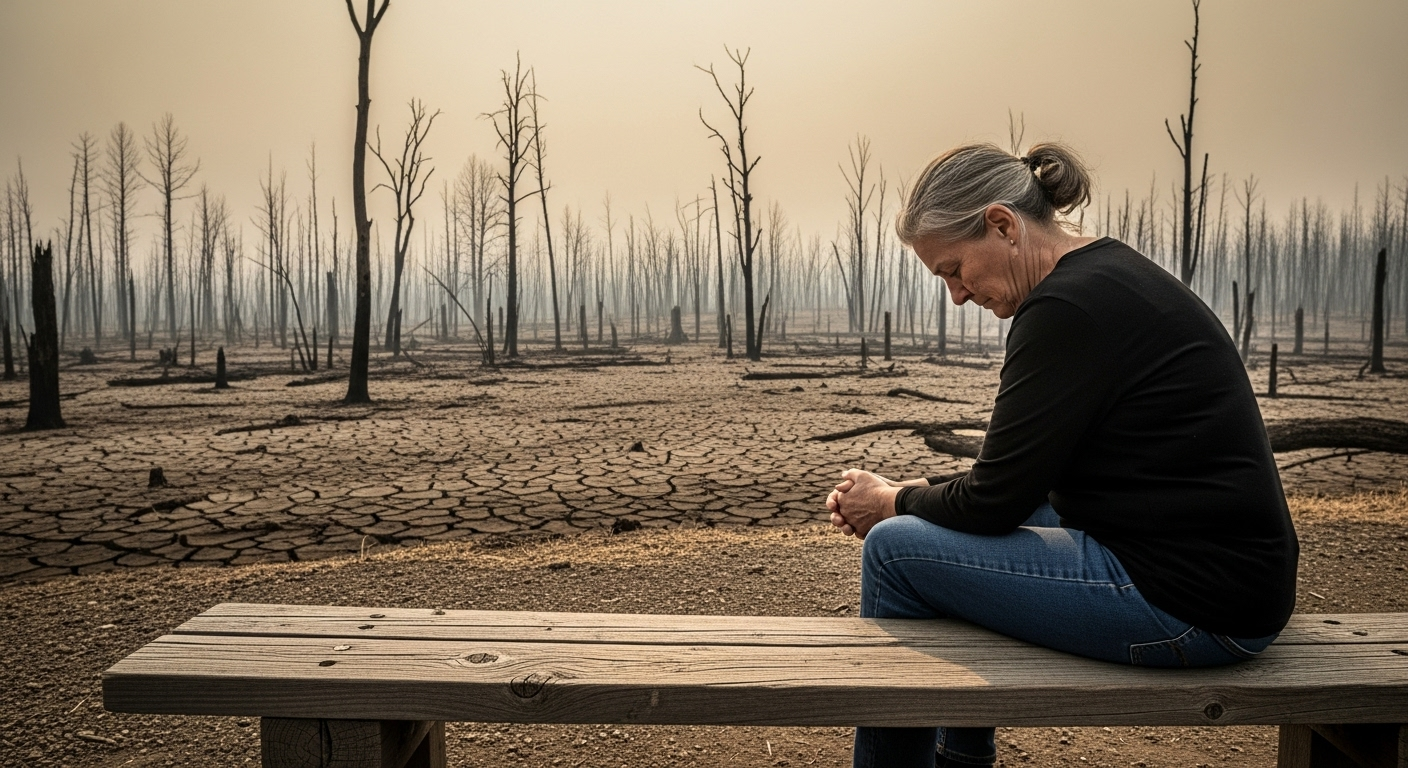Solastalgia: The Emotional Toll of Environmental Change
The rise of eco-anxiety in our rapidly changing world has given birth to a new psychological phenomenon: solastalgia. This complex emotional response to environmental degradation is reshaping how we perceive our connection to place and community. As climate change accelerates, understanding solastalgia becomes crucial for addressing mental health in the Anthropocene. Read below to explore this emerging concept and its far-reaching implications for society.

The Origins and Definition of Solastalgia
Solastalgia combines the Latin word solacium (comfort) with the Greek root -algia (pain) to capture the distress caused by the loss of solace once drawn from one’s environment. Albrecht developed this concept while studying the psychological impact of long-term drought and large-scale open-cut coal mining on communities in New South Wales, Australia. He observed that residents experienced a form of homesickness while still at home, as their once-familiar surroundings changed dramatically.
Unlike traditional nostalgia, which involves longing for a place left behind, solastalgia occurs when people remain in place but experience profound changes to their local environment. This can result from various factors, including climate change, natural disasters, urbanization, or industrial development. The core of solastalgia lies in the disruption of place attachment and the sense of belonging that people derive from their surroundings.
Manifestations and Psychological Impact
Solastalgia manifests in various ways, often overlapping with symptoms of anxiety, depression, and grief. Individuals experiencing solastalgia may report feelings of powerlessness, loss of identity, and a diminished sense of belonging. They might struggle with sleep disturbances, difficulty concentrating, or persistent worry about the future of their environment.
Research has shown that solastalgia can have significant impacts on mental health and well-being. A study conducted in the aftermath of severe drought in rural New South Wales found that residents reported higher levels of distress and decreased life satisfaction compared to those in less affected areas. Similarly, indigenous communities facing rapid environmental changes due to climate change have reported experiences consistent with solastalgia, including a loss of cultural practices tied to specific ecosystems.
Global Prevalence and Vulnerable Populations
While solastalgia was initially observed in rural and indigenous communities, it is increasingly recognized as a global phenomenon. Urban dwellers witnessing the transformation of their neighborhoods through gentrification or rapid development may experience solastalgia. Coastal communities facing rising sea levels and increased storm activity are particularly vulnerable, as are residents of areas prone to wildfires or other climate-related disasters.
Young people are emerging as a demographic particularly susceptible to solastalgia. Growing up in a world where climate change is a constant threat, many youths report feelings of grief and anxiety about the state of the environment. This generational experience of solastalgia is shaping political and social movements, driving demand for urgent action on climate change and environmental protection.
Coping Strategies and Community Resilience
As awareness of solastalgia grows, researchers and mental health professionals are developing strategies to help individuals and communities cope with this unique form of distress. One approach involves fostering community resilience through collective action. Engaging in local environmental restoration projects or participating in climate activism can provide a sense of agency and connection, mitigating some of the powerlessness associated with solastalgia.
Ecotherapy, which involves reconnecting with nature as a form of healing, has shown promise in addressing solastalgia. This may include activities such as gardening, forest bathing, or simply spending time in green spaces. By strengthening one’s connection to the natural world, individuals can find new sources of solace and develop adaptive coping mechanisms.
Implications for Policy and Urban Planning
The recognition of solastalgia as a legitimate psychological phenomenon has implications for policy-making and urban planning. There is a growing call for environmental impact assessments to include considerations of psychological well-being and place attachment. Urban planners are increasingly incorporating green spaces and nature-based solutions into city designs, acknowledging the importance of maintaining a connection to nature for mental health.
Climate change adaptation strategies are also beginning to address the psychological impacts of environmental change. This includes providing mental health support in disaster recovery efforts and developing community-based programs to build emotional resilience in the face of ongoing environmental challenges.
As we navigate the complexities of the Anthropocene, understanding and addressing solastalgia becomes crucial for maintaining individual and collective well-being. By recognizing the profound connection between environmental health and human psychology, we can work towards creating resilient communities capable of adapting to a changing world while preserving the essence of place and belonging that is fundamental to human experience.





